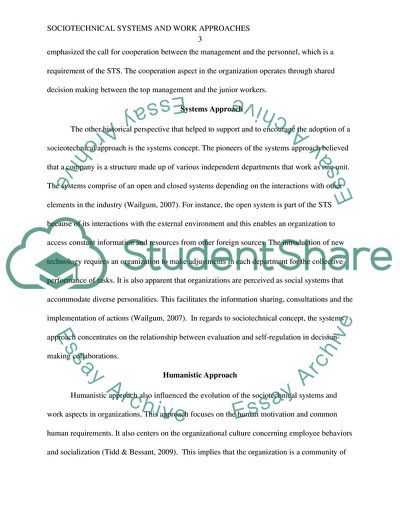Cite this document
(Sociotechnical Systems and Work Approaches Essay Example | Topics and Well Written Essays - 1250 words, n.d.)
Sociotechnical Systems and Work Approaches Essay Example | Topics and Well Written Essays - 1250 words. https://studentshare.org/social-science/1880063-sociotechnical-systems-and-work-approaches
Sociotechnical Systems and Work Approaches Essay Example | Topics and Well Written Essays - 1250 words. https://studentshare.org/social-science/1880063-sociotechnical-systems-and-work-approaches
(Sociotechnical Systems and Work Approaches Essay Example | Topics and Well Written Essays - 1250 Words)
Sociotechnical Systems and Work Approaches Essay Example | Topics and Well Written Essays - 1250 Words. https://studentshare.org/social-science/1880063-sociotechnical-systems-and-work-approaches.
Sociotechnical Systems and Work Approaches Essay Example | Topics and Well Written Essays - 1250 Words. https://studentshare.org/social-science/1880063-sociotechnical-systems-and-work-approaches.
“Sociotechnical Systems and Work Approaches Essay Example | Topics and Well Written Essays - 1250 Words”. https://studentshare.org/social-science/1880063-sociotechnical-systems-and-work-approaches.


